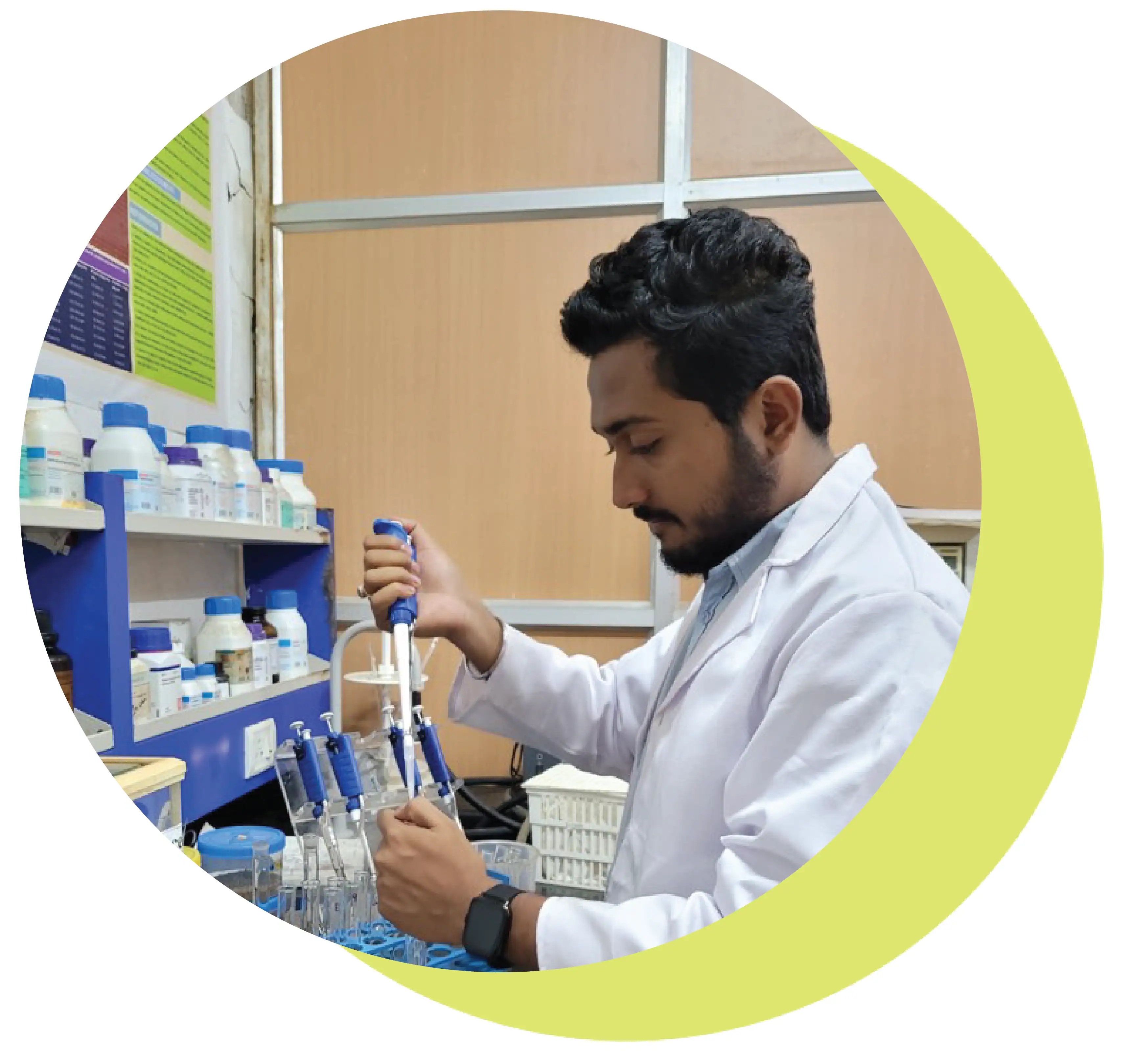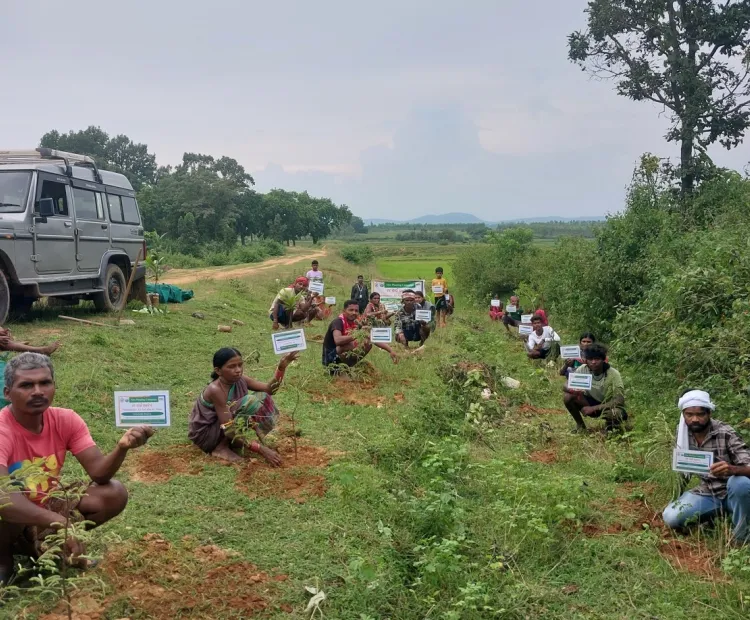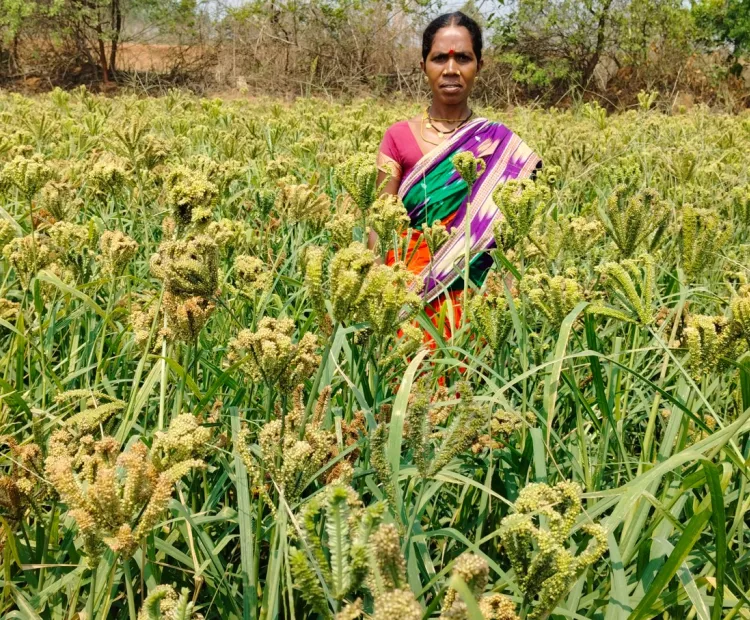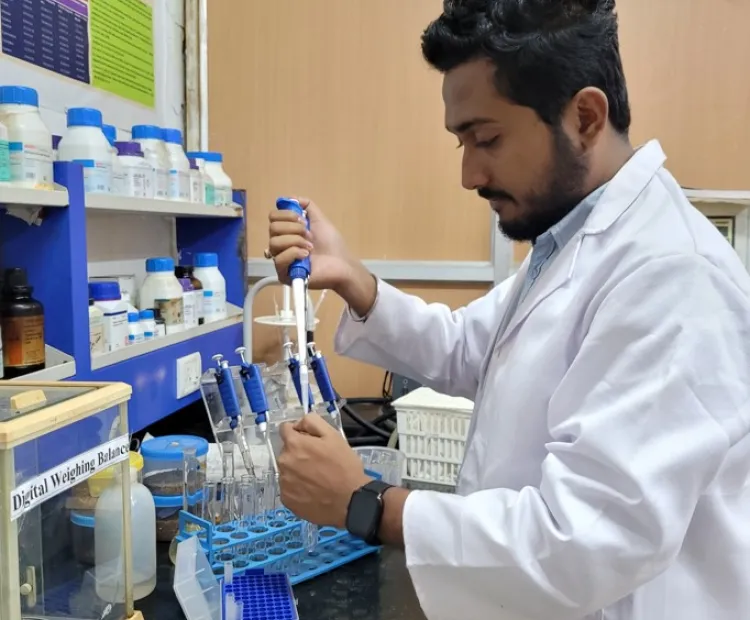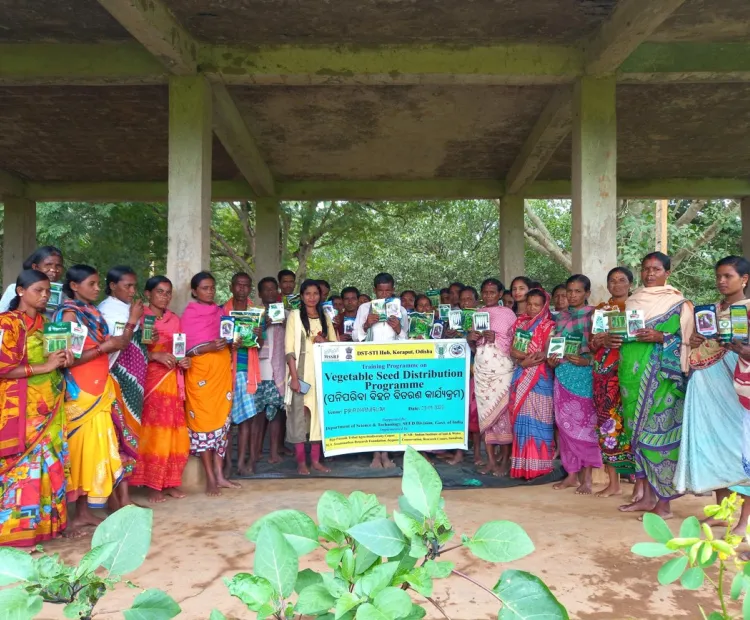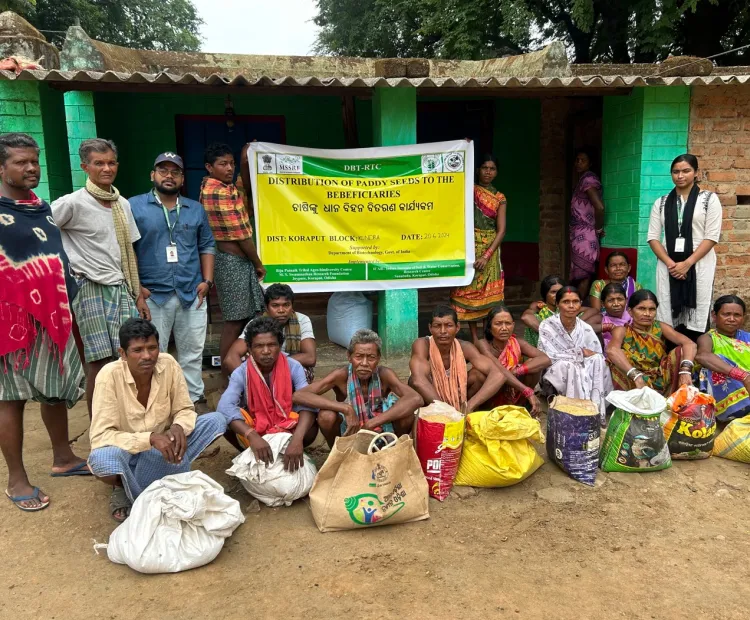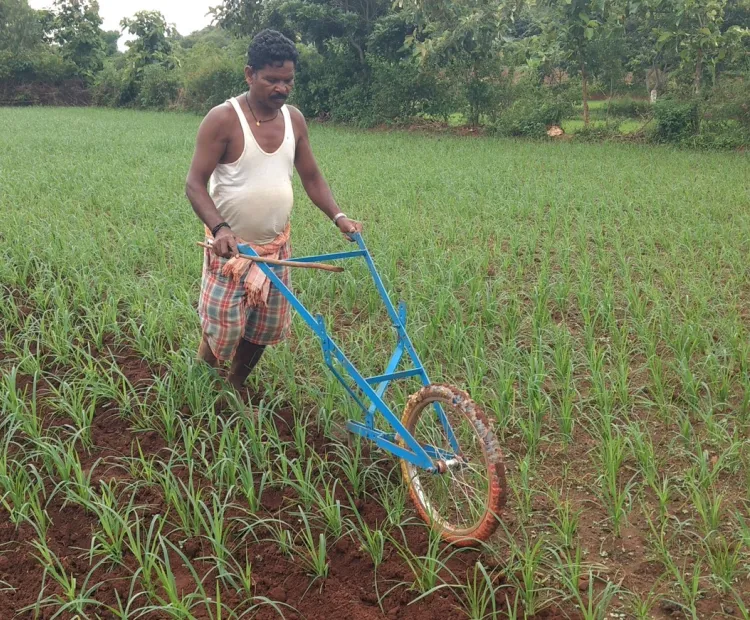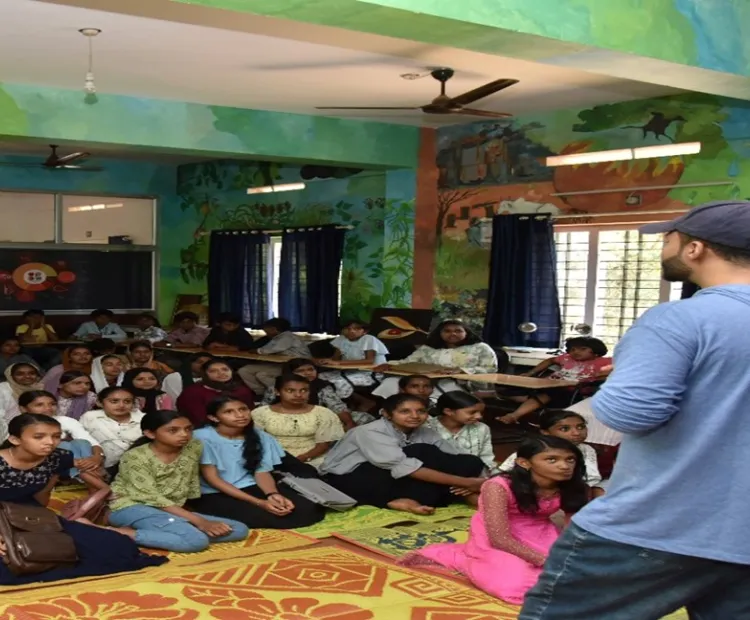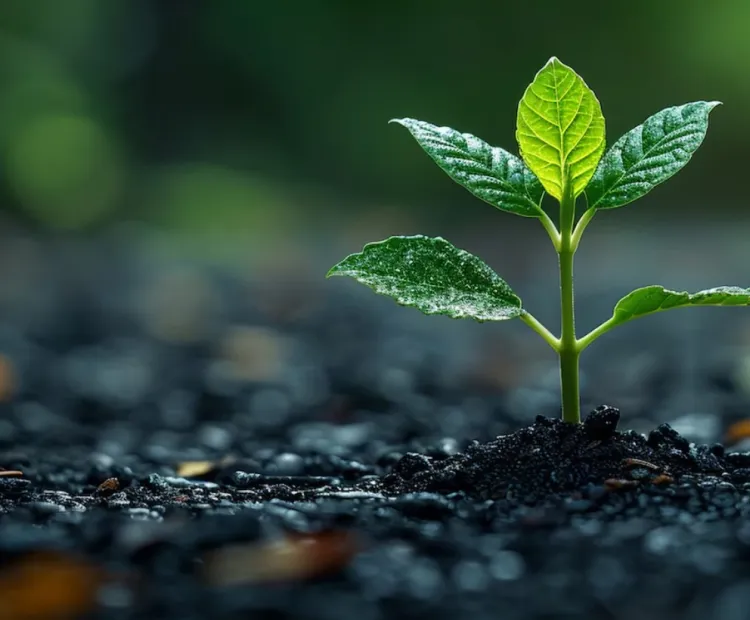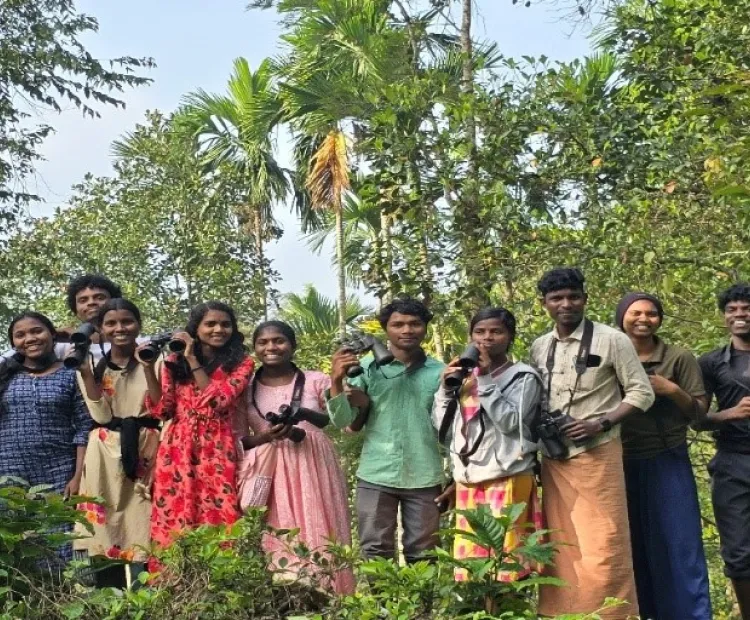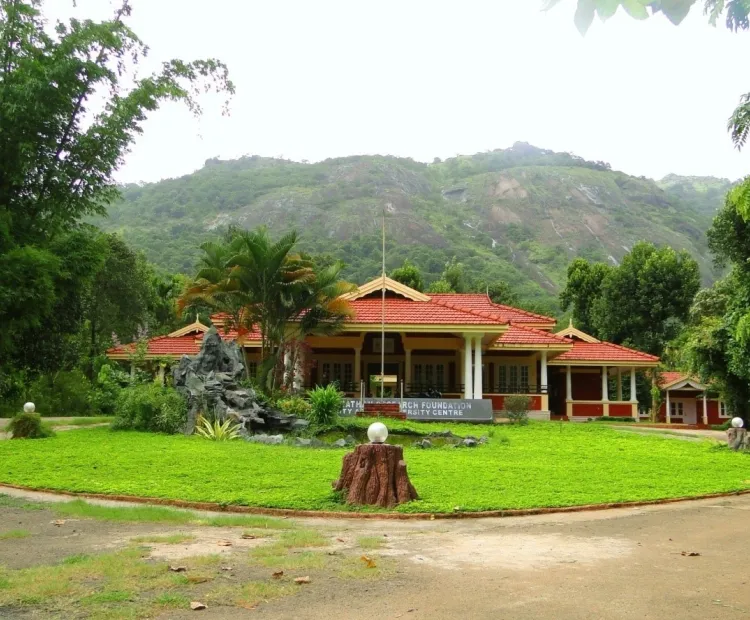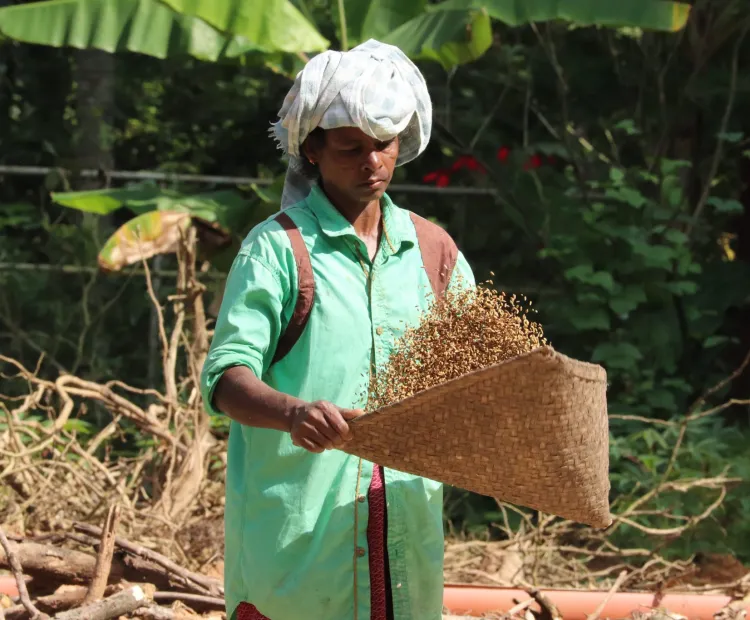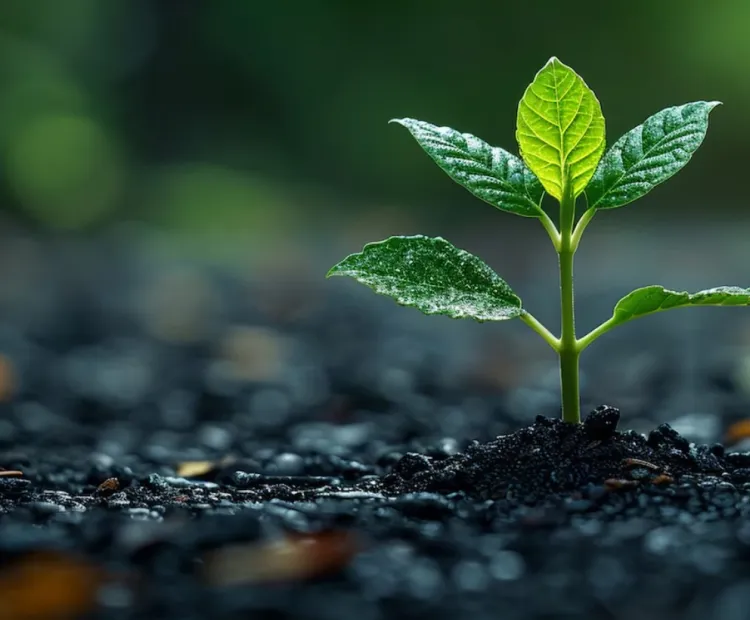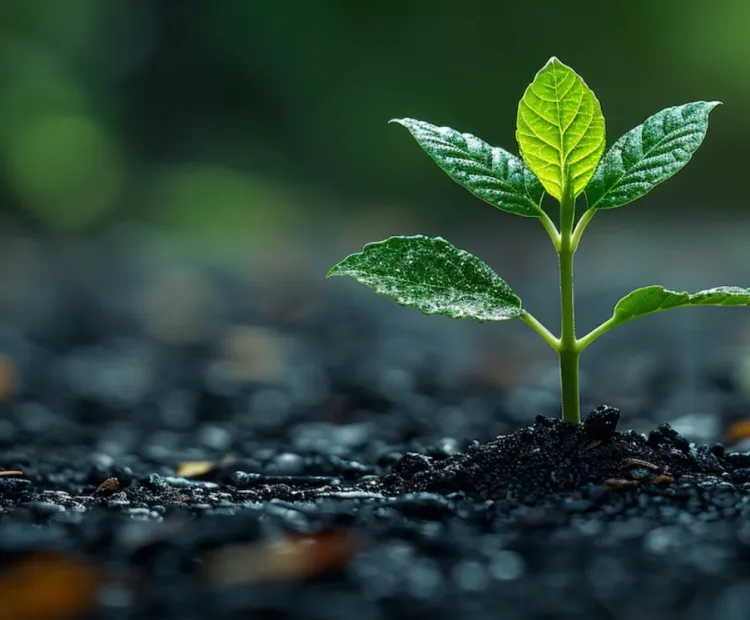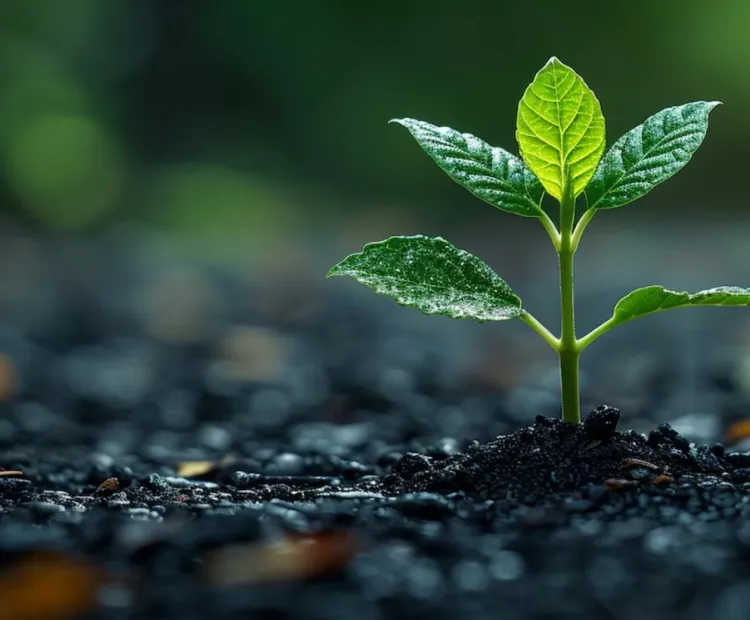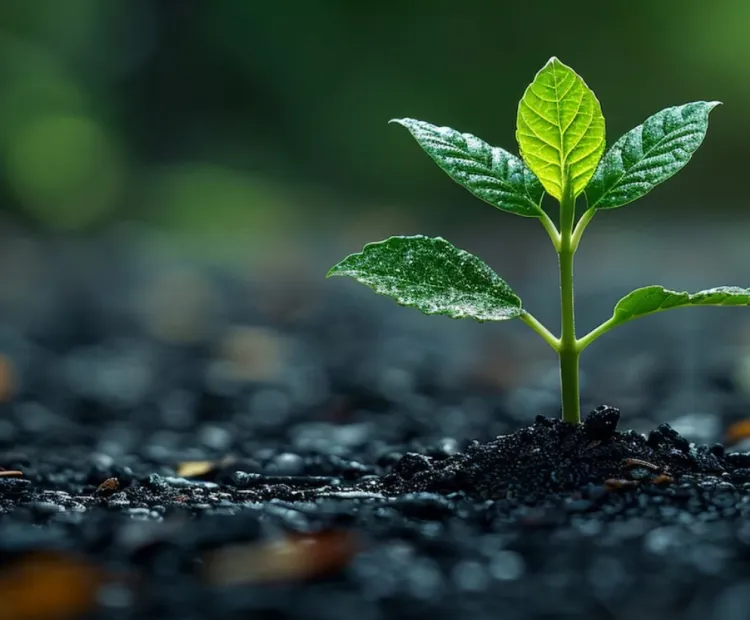Location: Jeypore and Koraput of Odisha
Funder: (DST-Biotechnology-GoO)
Project Period: 3 years (April 2023 – March 2026)
Project Overview:
Finger millet (Eleusine coracana L. Gaertn) belongs to Poaceae family and commonly known as “Ragi” and “Mandia” widely cultivated under rainfed conditions in India. India is the largest producer of finger millet which is grown on 1.27 million hectares (Mha) of cultivated land with an annual production of 1.89 million tons (Mt). Unique attributes of millets such as the ability to adapt under severe and adverse climate condition, minimal agro- input requirement and with the exceptional nutritional quality makes these crops crucial plant genetic resources for climate resilient agriculture. Studies have shown that indigenous genotypes that are traditionally cultivated and maintained by farmers contain a high level of genetic diversity and can be serve as potential genetic resources for future hybridization programmes.
Morphologically finger millet showed huge variations, which need to be captured at DNA level for the detection of genetic diversity. Despite its economic and nutritional importance, breeding and selection of finger millet with improved traits are currently limited. Lack of adequately characterized germplasm both at the physiological and molecular levels makes it difficult to identify suitable germplasms with superior traits of interest. The dearth of knowledge regarding population structure has significantly contributed to the genetic erosion of millets. Therefore, information on the genetic diversity of finger millet with respect to climate resilience and nutritional properties is essential for their efficient utilization in the crop improvement programs.
Northern Eastern Ghats of India is one of the agro-biodiversity hot spots in India and home to a large number of indigenous finger millet genotypes. These traditional finger millet genotypes although are less productive compare to improved cultivars, these genotypes offer great promise to combat the current challenges of adverse effects of climate change, ensuring food and nutritional security. The traditional varieties grown by the farmers are likely to be lost in the near future if measures are not taken to protect the valuable genetic resources. In this background, there is limited phenotypic knowledge and no molecular profiling reports of finger millet genotypes of Northern Eastern Ghats of India concerning climate resilience and grain quality traits. Hence exploring these indigenous finger millet genotypes of Northern Eastern Ghats of India for their genetic potentiality for nutritional and climate resilient traits are essential for future finger millet breeding programs.
Objectives:
- Collection of diverse indigenous finger millet genotypes from tribal pockets of Northern Eastern Ghats of India.
- Screening of indigenous finger millet genotypes for superior agronomical, nutritional and climate resilience traits
- Molecular profiling of indigenous finger millet genotypes for determining the genetic relationship by SSR Marker.
- Preparation of a genetic databank (Microsatellite Panel) for proper genetic identification and utilization in marker-assisted breeding program.
Major Activities:
- Field visit to the area and collection of indigenous finger millet seeds.
- Screening of indigenous finger millet genotypes for superior agronomical traits.
- Nutritional and climate resilience profiling
- Evaluation of nutritional traits and climate resilience by CUO, Koraput
Impact of the Project:
- The drought or flood resistance varieties identified it will contribute to future food security
- A concrete data set will have prepared for the future so that no duplication occurs the same varieties with different name
- End of the project minimum around three publications will come out from the project and its popularized the genetic resources available in Koraput which will create market demand so indirectly it will create livelihood option of the custodian farmer’s.
